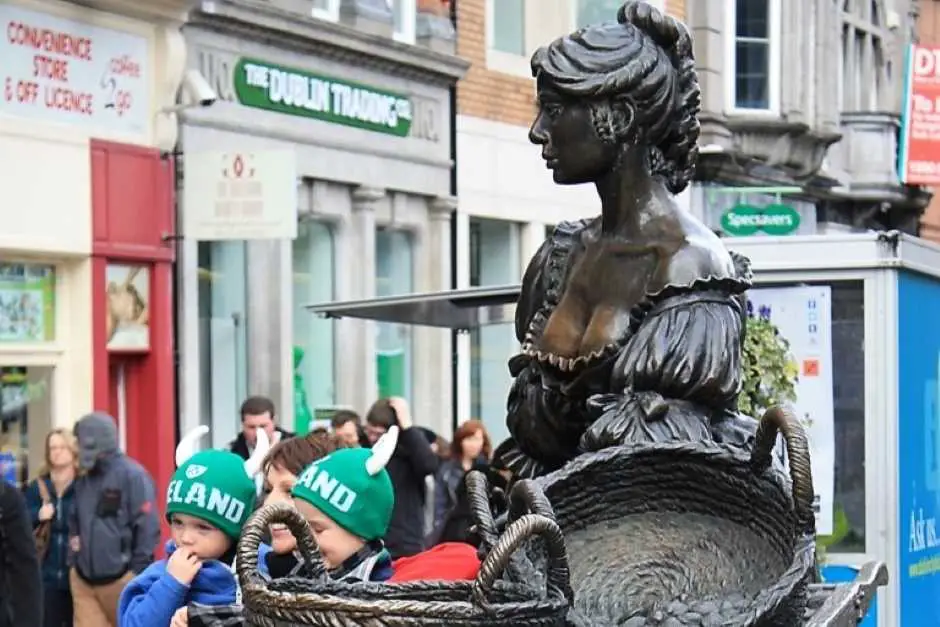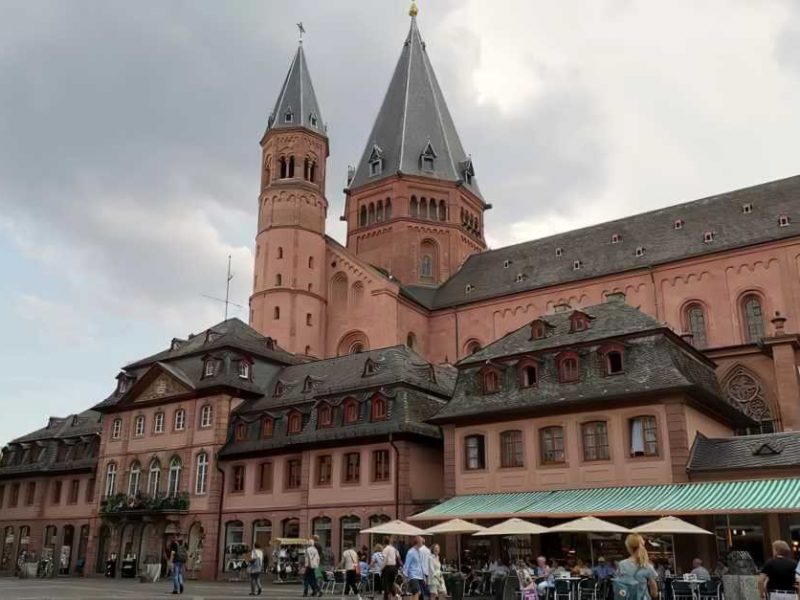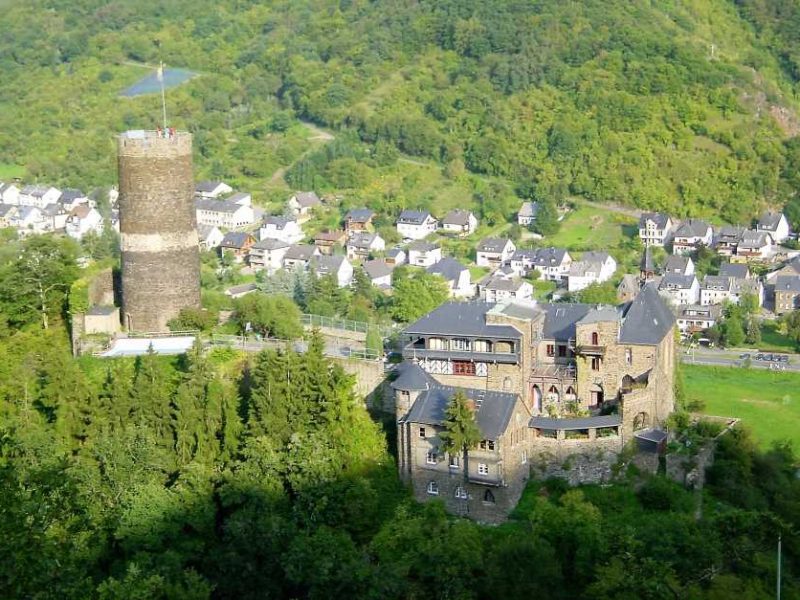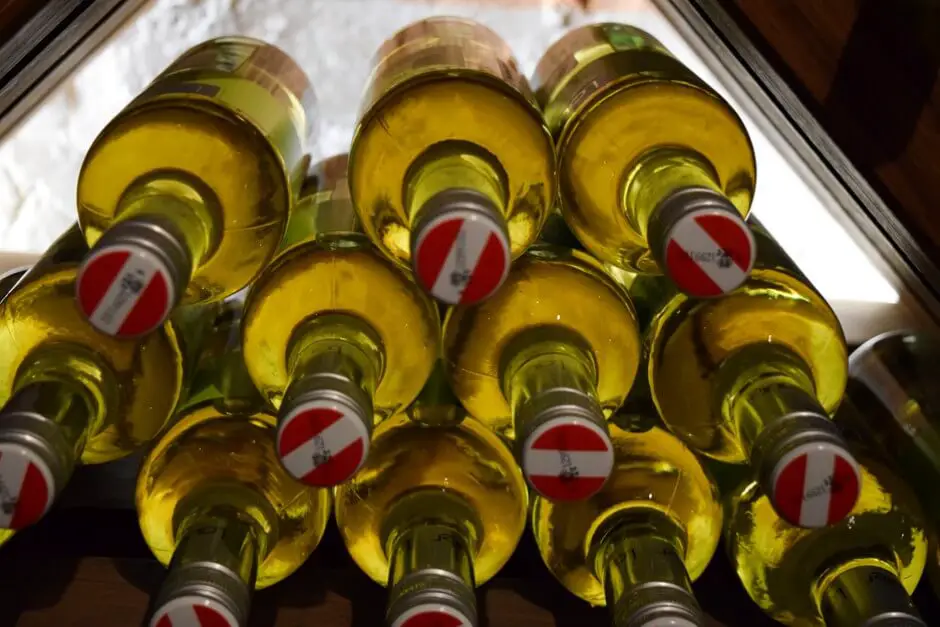Dublin landmarks
The Ireland Dublin attractions are divided into two areas. One part is south of the River Liffey and includes parkland, Trinity College, the Museum District and Temple Bar. If you have limited time in Dublin, this is the part to focus on.
The second part of Dublin's attractions is north of the River Liffey. There you will find shopping, the General Post Office and other attractions.
Travel Arrangements:
If you book via a link marked *, we receive a commission, which we use to run this blog. Nothing changes in the tour price for you.
Parking at the airport
Here you can reserve your parking space at the airport.
How to reach us
Compare and book flights here*.
Car Rentals:
Cheap rental cars and e-cars - book quickly and easily!
Camper Rentals:
Rent a motorhome here in Ireland*. Or do you prefer to travel with a roof tent on the car?
A campsite near Dublin is Camac Valley Tourist Caravan and Camping Park, 22 Green Isle Rd, Kingswood, Clondalkin, Co. Dublin, D22 DR60, Ireland.
Dublin Pass:
A Dublin Pass includes entrance fees to attractions as well as tours.
Transfers:
Reserve your transfers from the airport to Dublin
Hotels in Dublin:
We have in Dublin at Merrion Hotel*, in the Brooks Hotel and in the Camden Court Hotel* .
Discover the sights of Dublin in Ireland
To get to know the sights of Dublin in Ireland, you need a lot of time. If you want to explore Dublin intensively, we recommend a week to ten days. Only then will you have enough time to see the most important sights in Dublin. We have visited Dublin several times, each for several days, and still don't know each of them personally. There are just too many for that. It is therefore worth making a choice before visiting.
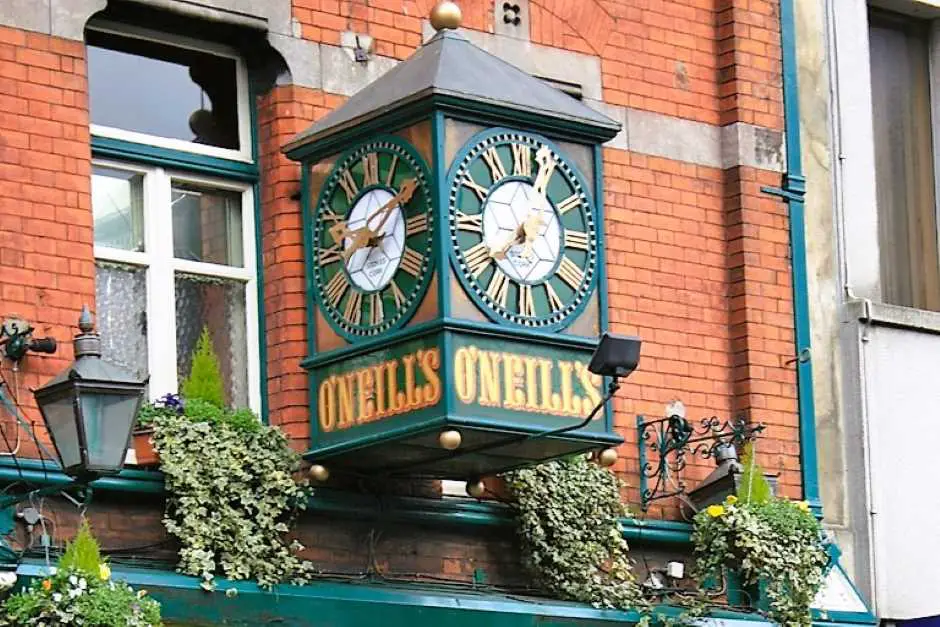
Dublin insider tips
College Green and Bank of Ireland
2 College Green, Foster Place entrance, Tel. (01) 661 5922 line 2265, 10.00am – 16.00pm Mon – Fri, closed Bank Holidays, House of Lords 10.30am Tues.
The building was built as Ireland's first Parliament building. The central part was the work of Edward Lovett Pearce, who began construction in 1728 and completed it in 1739. Nothing is left of it today, as this part burned down in 1792. However, the House of Lords still exists. Inside are tapestries from 1733 depicting the Battle of the Boyne River and the Siege of Londonderry. The coffered ceiling, the crystal chandelier from 1788 and the oak mantel, which was designed by Indigo Jones, are worth seeing. You can also see the staff of office from 1765, which the descendants of the last speaker sold.
The southern facade consists of a portico flanked by two wings. Above the entrance there are statues representing Hibernia, Loyalty and Commerce. James Gandon added the east wing in 1785. The West Wing dates from 1797. After the Dissolution of Parliament, the Bank of Ireland bought and remodeled the building.
In front of the bench on College Green is a statue of Henry Grattan, a leading figure in the old Parliament.
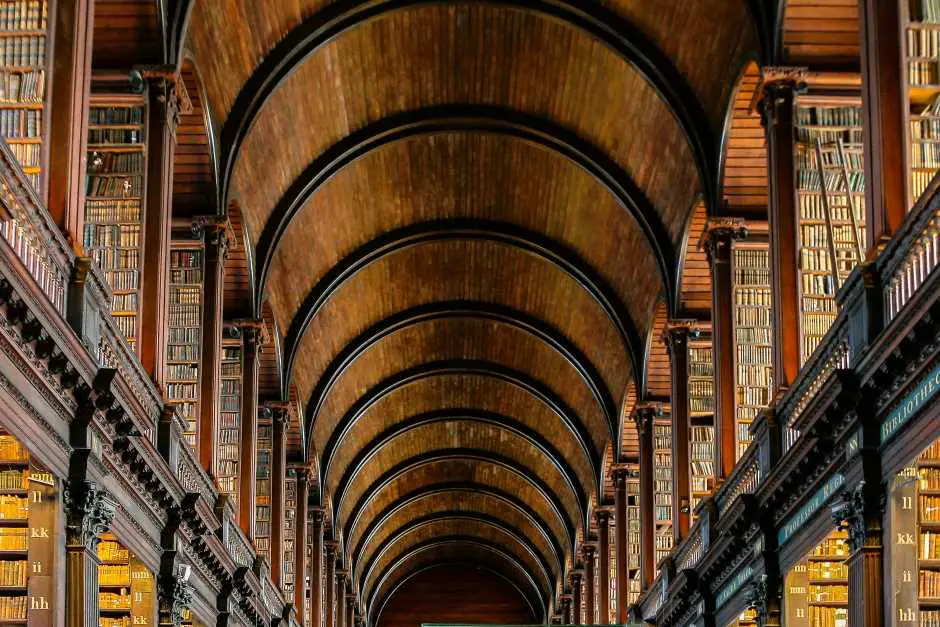
Trinity College
Entrances on Nassau Street and College Green, Old Library, Apr - Sept 8.30am - 17.00pm Mon - Sat, Sun and some holidays 09.30am - 17.00pm , Oct - Mar, Mon - Sat 9.30-17.00, Sun. 12.00-16.30. Chapel by appointment only. Douglas Hyde Gallery during exhibitions only.
Queen Elizabeth I founded the college in 1592 on the site of the Augustinian monastery of All Saints. At that time it was on the outskirts of town. Until the late 19th century, Trinity College was reserved for Protestants only. Writers Samuel Beckett and Oliver Goldsmith and author Edmund Burke studied here.
The old library and the treasury are worth seeing. The building was constructed between 1712 and 1732 based on plans by Thomas Burke. He also designed many of the English fortifications.
The Treasury and the Long Room
The treasury displays the library's artworks. The Book of Kells (c. 800), a manuscript of the Four Gospels which was in Kells Abbey until the 17th century. Also found are the Book of Durrow, (c. 700), a manuscript of the Gospels, and the Book of Armagh, (c. 807). It also contains the Vitae of Saint Patrick and Saint Martin, and Saint Patrick's Confession. The Book of Dimma, (ca. 1150), contains the Four Gospels and liturgical texts.
The Long Room consists of 20 alcoves filled with books. Above is the gallery, which was later added to make room for books. In this room is a harp discovered in Limerick in the 18th century and made of willow wood. She is over 500 years old.
The 1798 chapel is the only one in the republic used by all denominations. Michael Stapleton provided the design for it. At the center of the square is the Campanile, the clock tower designed by Sir Charles Lanyon in 1853. South of the main entrance is the curator's house from 1758.
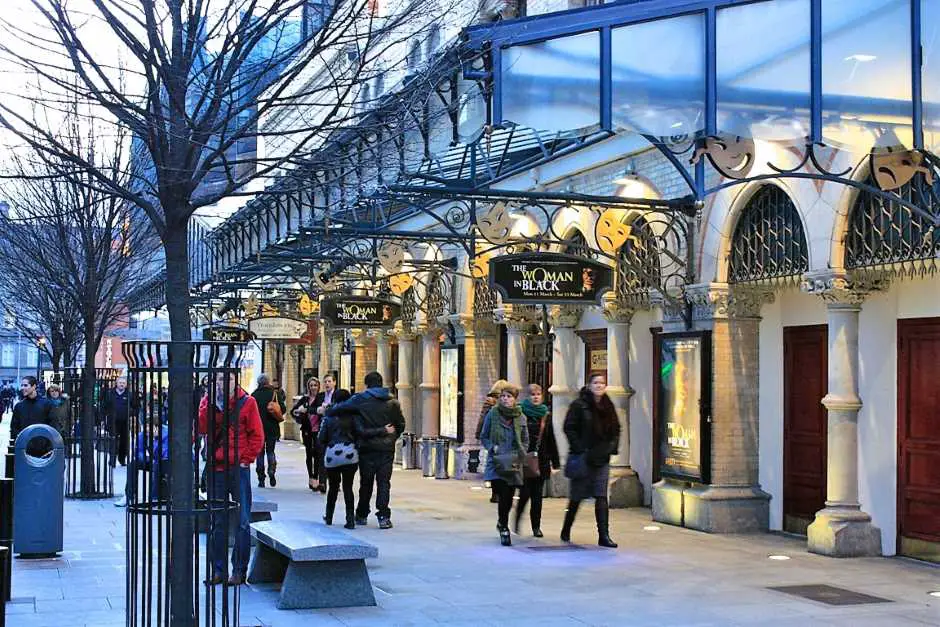
Grafton Street
Dublin's shopping paradise is concentrated around the pedestrian zone. At the north end of the street is a statue of Molly Malone. Jean Rynhart designed her in 1988 in the image of a fishmonger who the Irish sing about in a folk song.
On Grafton Street you will meet many jugglers and street musicians. Here you will find shopping temples like Brown Thomas.
You mustn't miss it Powerscourt Shopping Center, housed in an 18th-century town house. It belonged to Viscount Powerscourt. A shopping experience awaits you there in an unusual environment.
Mansion House
Dawson Street
This Queen Anne style home was built in 1705 to designs by Joshua Dawson. The street it is on is named after him. In 1715 the City of Dublin bought it as a residence for the Mayor. The facade was created during the time of Queen Victoria. The Round Room was completed in 1821 for the visit of King George IV. There, in 1919, the Irish Parliament accepted Ireland's Declaration of Independence. Today the building is mainly used for events and receptions.
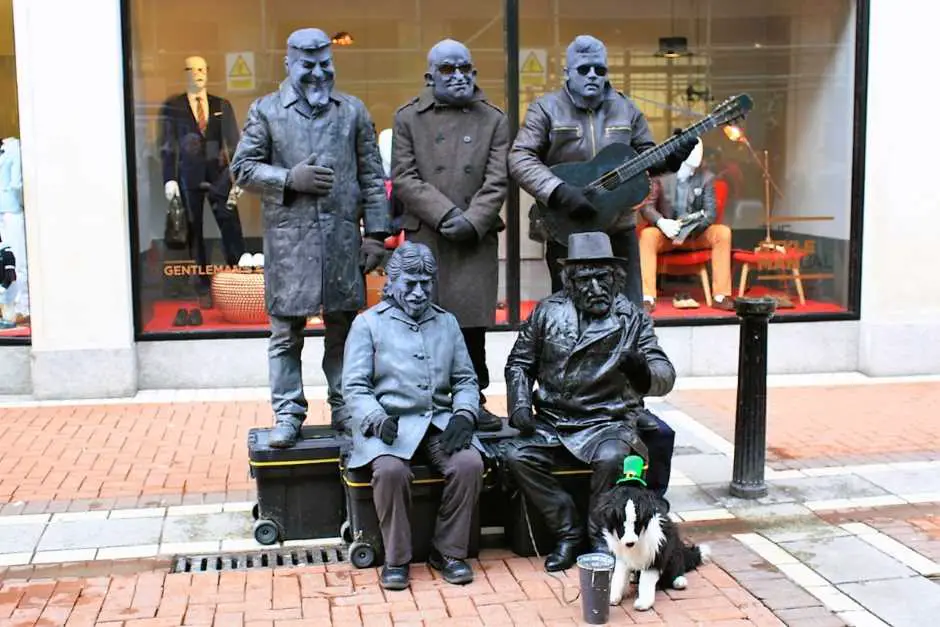
Dublin sights in the museum district
National Museum
Kildare St., Annex at Collins Barracks, Benburb St., Dublin 7, Open all year: Tue-Sat 10.00am-17.00pm, Sun-Mon 13.00pm-17.00pm. Good Friday, 25.12. and St. Stephen's Day. Free entry. No photography allowed. Refreshments. Tel (01) 677 7444; Fax. (01) 677 7828
The building from the 1880s is used to display the national archaeological treasures. The rotunda is surrounded by marble columns.
The exhibition rooms on the ground floor include the Boat of the Broighter Treasure (1st Century), the Loughnashade Trumpet (1st Century BC), the Chalice of Ardagh (8th Century), the Tara Brooch (8th Century). century), the shrine of the bell of St. Patrick in bronze, silver and gold (c. 1100), the cross of Cong (c. 1123) and other finds. A visit to the museum is definitely worthwhile.
On the first floor you can see finds from the Viking Age. These hail from the region of old Dublin. There is also a section dedicated to Egypt.
Leinster House
Kildare St., Tel (01) 681 3000, Tel (01) 668 9333 (Prime Minister's Office). Tel (01) 618 3296 (Captain of the Guard).
The two chambers of Parliament, Dail Eireann and Seanad Eireann, are located in this house. Richard Castle built it for the Duke of Leinster in 1745. The Royal Dublin Society bought the house in 1815. In 1922 it was acquired by the Parliament of the Republic.
Visitors are permitted in the gallery overlooking the Chamber of Commons (Dil).
National Library
Kildare St., open Mon - Fri 09.30am - 17.00pm, closed Bank Holidays, tel (01) 661 8811
The National Library opened in 1890. Sir Thomas Deane designed the building. It was intended to house the Royal Dublin Society's collection. Manuscripts by George Bernard Shaw and Daniel O'Connell are on display in the entrance hall. The National Library holds photographs of Ireland under Queen Victoria and a 13th-century manuscript, the Topographia Hibernia by Giraldus Cambrensis.
The reading room on the first floor is accessible with a visitor pass.
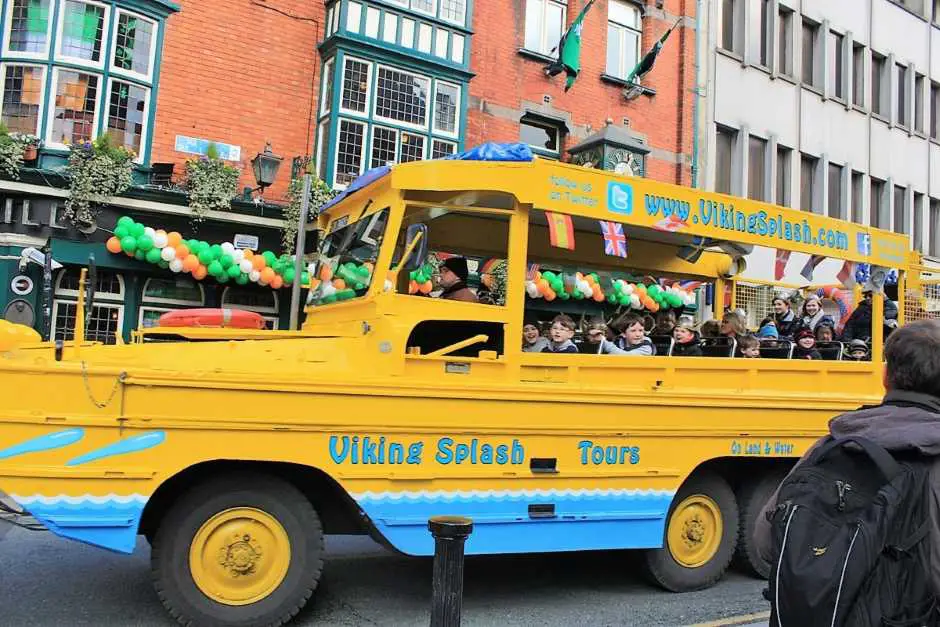
Merrion Square
Illuminated at night.
In 1762 the Wide Street Commission had this square of about 5 hectares laid out.
On its west side are the Natural History Museum, the National Gallery and Leinster House. Worth seeing are the doors, the wrought iron balconies, the door knockers and the skylights of the houses. Many of them now house offices. People like Daniel O'Connell, the liberator of Ireland, used to live at No. 58, the poet William Butler Yeats at No. 82 or the playwright Oscar Wilde at No. 1. There is a statue of Danny in his memory Osbourne at the north east end of the park.
The park also played a part in history for Dublin's poor. Soup kitchens were set up there during the famine of the 19th century. On the north-west side of the park is the Rutland Fountain, which was built in 1791 for the use of Dublin's poor.
National Gallery
Merrion Square West, open all year, Mon 11.30am – 17.30pm, Tue and Wed 09.15am – 17.30pm, Thu 09.15am – 20.30pm, Fri and Sat o9.15am – 17.30pm; Sun. 11.00 a.m. – 17.30 p.m. Good Friday, December 24th – 26.12th closed. No photography allowed. Free entry. Restaurant, book store. Tel (01) 661 5133, Fax. (01) 661 5372
The museum opened in 1864. Francis Fowke designed the building. Soon afterwards Dutch masters from the 17th century were exhibited there. George Bernard Shaw donated a third of his property to the gallery. Today, more than 500 works are on display here, mostly by artists from Ireland. But there are also paintings by painters such as Caravaggio, Rembrandt, Reynolds, Gainsborough and Sisley.
Natural History Museum
Merrion St., currently closed for construction. Tel (01) 677 7444.
dr David Livingstone opened the museum in 1857 with an exhibition on the wildlife of Africa.
In the entrance hall are three skeletons of the Great Irish Deer, now extinct. The ground floor has exhibitions dealing with the fauna of Ireland. Glass models of marine life forms, whale skeletons and buffalo and deer trophies can be seen on the upper floor.
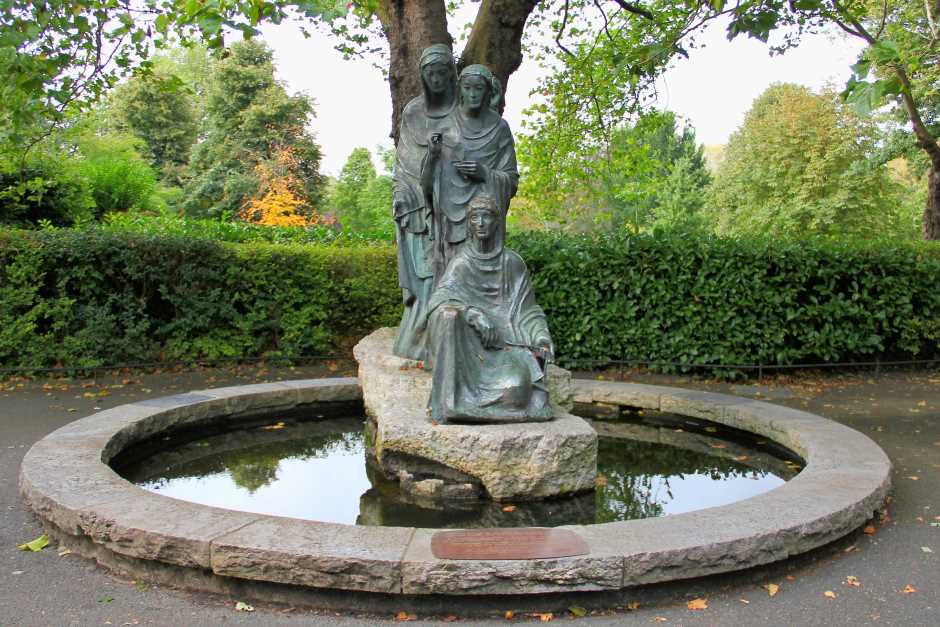
St. Stephen's Green - one of Dublin's must-see attractions
The park was one of three "Commons". That's what city parks are called in England, which fulfilled functions in the life of a city. In 1664 it was fenced in. In the 1880s, Lord Ardilaun had water areas, fountains, flower borders and grassy areas laid out. His statue stands on the west side of the park.
There is a bust of James Joyce and a memorial to WBYeats in the park grounds. On the corner of Merrion Row stands a memorial to 18th-century nationalist Wolfe Tone. There are concerts in the summer at the music pavilion from 1887. These are free.
Shelbourne Hotel
Dublin 2, tel (01) 676 6471, fax. (01) 661 6006
Since its opening in 1867, this hotel has been one of the best addresses in the city.
At the entrance are statues of princesses and their slaves from Nubia. A look into the foyer with its chandeliers is worthwhile. In the afternoon you can take a break with a cup of tea in the Lord Mayor's Lounge.
Harcourt St
The road branches off the southwest corner of the park. Brick houses with doors and skylights worth a look line the street.
Iveagh House and Iveagh Gardens
80 & 81 Stephen's Green, Iveagh House is closed to the public. The gardens, on the other hand, are open Monday to Saturday from 8.00 a.m., Sunday and public holidays from 10.00 a.m. Tel. (01) 475 7816.
The entrances are somewhat hidden. One is behind the National Concert Hall on Earlsfort Terrace. The other is off Clonmel Street. Richard Castle designed the two town houses that Sir Benjamin Guinness bought in the 1860s. Nothing remains of the facade of the original building. Guinness had the family crest placed in the pediment. Today the office of the Minister of Foreign Affairs is located in this building. However, it is also used for state receptions.
The gardens offer an alternative to Stephen's Green with lawns, walkways, fountains, a rose garden and a maze.
Newman House
85 & 86 Stephen's Green, open Tues - Sun and bank holidays that fall on a Monday. 10.30 – 18.00. Tel (01) 706 7422 or (01) 475 7255, Fax. (01) 706 7211.
The two 18th-century houses are named after John Henry Newman, Cardinal and Rector of the Catholic University of Ireland. Classes began there in 1854. The university was established as an alternative to Trinity College. It has been part of University College Dublin since the 1920s.
Alumni include James Joyce, poet Gerard Manley Hopkins, novelist Flann O'Brien and the first President of the Republic of Ireland, Eamon de Valera.
Royal College of Surgeons
Dawson St., closed to the public.
Dating back to 1810, this training school for surgeons is on the west side of St Stephen's Green. Today it has about 1000 students from all over the world. Above the pediment are three statues - from left to right Hygieia, the goddess of health, Asklepius, the god of medicine and son of Apollo, and Athena, the goddess of wisdom and patroness of the arts.
A group of Irish Citizens Army led by Michael Mallin and Countess Markievicz occupied the building during the Easter Rising of 1916. They were the last to surrender. Although Mallin was executed, Markievicz survived because of her gender and status. She was the first woman to go to Westminster in London as a Member of Parliament. The pillars on the facade still contain the bullet holes.
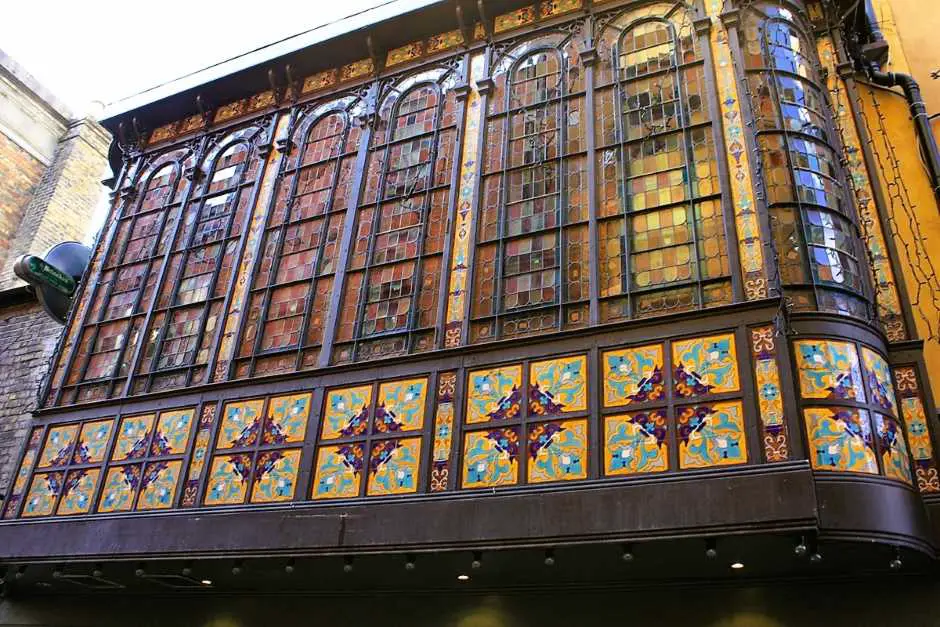
Temple Bar – one of Dublin's must-visit spots for pub lovers
On the south bank of the Liffey between the river and Dame Street, Fishamble St and Anglesea St.
The area is named after Sir William Temple. He bought the land in the early 17th century. Shops settled here in the 18th century. But over time, the neighborhood fell into disrepair. In the early 1960s, there were plans to build a bus station there. Artists and business people stayed even after these plans were abandoned. Temple Bar developed into a district with bars, restaurants, shops and galleries. Open spaces were laid out – open-air performances are held at Meeting House Square. The Central Bank Plaza is nestled between banks and insurance buildings on Dame Street. Shopping is available at Temple Bar Square.
Walk through Temple Bar
The best place to start your walk is at Merchant's Arch, across from the Ha'penny Bridge. You walk through an alley lined with shops like in a bazaar. Behind you get to Temple Bar Square. Dubliners like to take a lunch break there. Along the east side of the square is Crown Alley with its shops and cafes. Visit the Temple Bar Information Center (18 Eustace Street, tel (01) 671 5717) for information on galleries and restaurants.
Meeting House Square was named for the Quaker prayer site that was once located here. During the summer, classical music concerts take place here at lunchtime and in the evening. Here they show outdoor movies that are free. However, tickets from the Temple Bar Information Center are required. There is also a market with natural products.
Viking Adventure, Essex St West, Tel (01) 679 6040, March to October (Tuesday to Saturday) presents a multimedia show of life in 9th Century Dublin. Visitors board a boat at the start of the tour. This navigates through a "storm" before landing in a Viking village with houses from the period. The special effects are authentic right down to the smells. Guides explain digs at Wood Quay. A film shows the life of the time. In the evening there is a feast around the nave with food and entertainment.
Guinness Storehouse - one of the Dublin attractions for Guinness lovers
St James's Gate, Dublin 8, opening hours: Sun-Thurs 10.00am-17.00pm, Fri-Sat 10.00am-19.00pm.
The Guinness Storehouse is a must-see for anyone who enjoys the Irish dark ale. There you will learn more about the history of beer from Ireland. You will be shown how it is brewed. There is also information about the Guinness family. Also worth a visit is the Gravity Bar on the top floor of the Guinness Storehouse. There you can enjoy your beer with a view of Dublin and the sights in the area. On a clear day, views extend to the Wicklow Mountains to the south and Howth to the north-east. What you at a Visit to the Guinness Storehouse you can experience everything in this article.
Old Jameson Distillery – one of Dublin's must-see attractions for whiskey fans
7 Bow St, Dublin.
Do you prefer whiskey? Then a visit to the Old Jameson Distillery might be interesting for you. During a guided tour you will learn how whiskey is made and what is important. A visit to the distillery is not complete without a whiskey tasting afterwards. You can also combine a visit to the Old Jameson Distillery with a visit to the Guinness Storehouse. There are various offers for this.
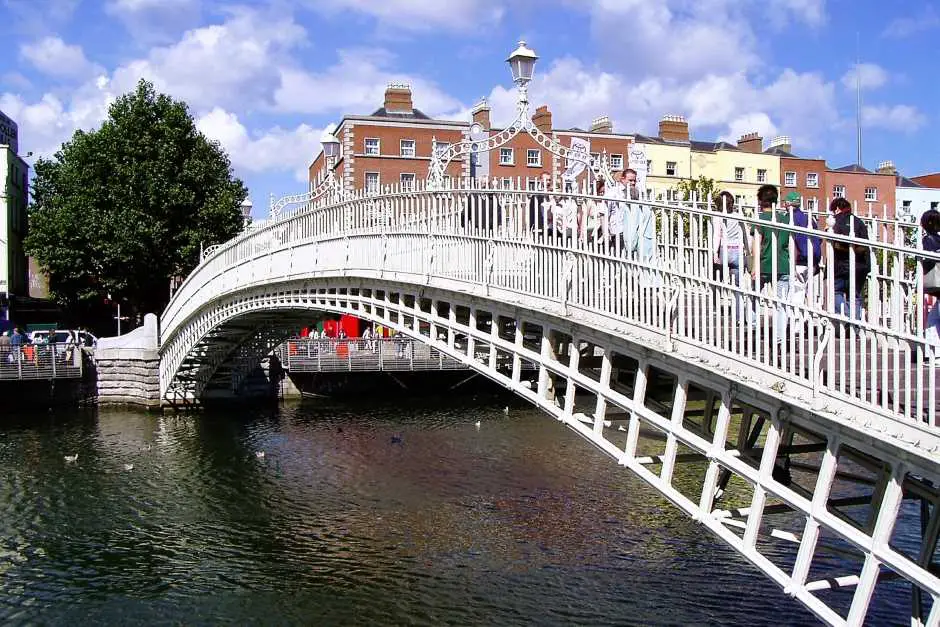
Ha'penny Bridge – one of the most popular Dublin sights with photographers
The bridge connects Temple Bar to the north bank of the Liffey. Hardly anyone knows its official name, Wellington Bridge. The bridge is better known by its nickname Ha'penny Bridge. She received this because in the 19th century a fee of half a penny had to be paid to cross the bridge. This was abolished in 1919, but the name stuck.
The wrought iron construction was created by John Windsor, a steel worker from Shropshire in England. It is one of the city's main photo opportunities for visitors. She looks attractive especially at night. Then it is lit.
Dublin landmarks in the south west of the city
Dublin between the Liffey and its tributary, the Poddle River
The Vikings settled at Wood Quay. During excavations in 1974-81, the remains of 150 Viking buildings from between 920 and 1100 were found.
The city spread west towards the Kornmarkt, where grain was sold for export during the Middle Ages. Not much remains of the buildings on Fishamble Street where Molly Malone was born and where Handel first conducted the Messiah.
The area south and west of this is known as the Liberties. In the Middle Ages this was outside the city. Huguenots from France erected some of the buildings in the 17th century. Others emerged as mansions in the 19th century. There are also blocks of flats from the 20th century.
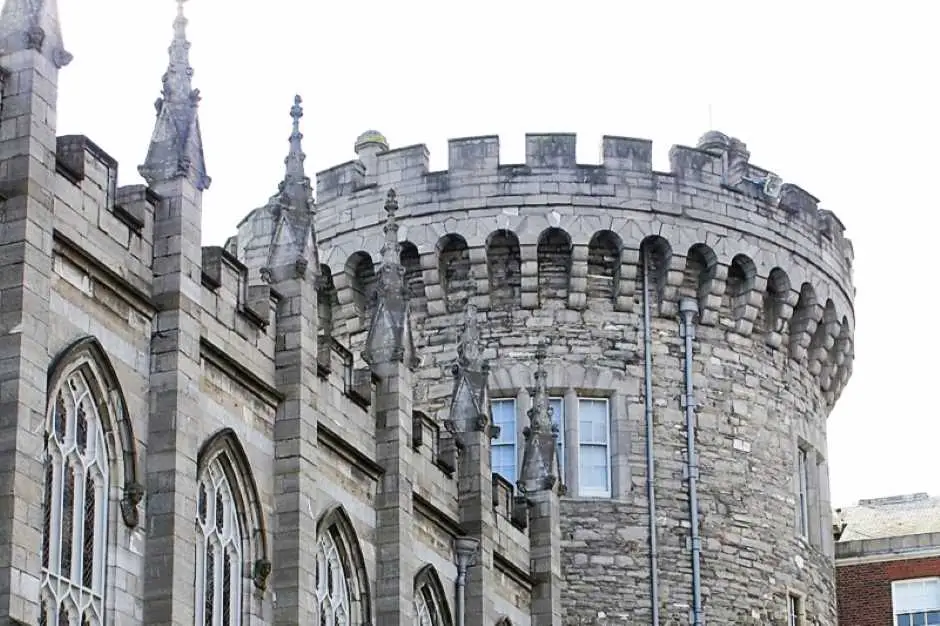
Dublin Castle – one of Dublin's landmarks from the Anglo-Norman era
On Dame St., State Rooms open daily Mon – Sun and Holidays 09.45am – 17.45pm. Opening times subject to change. These can be changed at short notice.
Dublin Castle has symbolized England's rule over Ireland since the 13th century. At that time, the Anglo-Normans built a fortress on this site. From this only parts of the Record Tower are preserved.
The Kildare Revolt
The siege took place in 1534 when Thomas Fitzgerald was acting as deputy commissioner for his father, who had traveled to London. When he received false news of his father's execution, he threatened the people and besieged the castle. The incident is known as the "Kildare or Geraldine Revolt". The citizens warned the castle sentry and provided him with supplies. When they heard the king's men approach, they turned on Fitzgerald. The besieged announced the arrival of the king's army and made a sally. The attackers then fled. Fitzgerald himself managed to escape. But a few months later he had to give up. He was executed in London along with five of his uncles.
After a fire in 1684, Sir William Robinson designed the courtyards as they stand today. On the first floor, on the south side of the Upper Court, are the state rooms, which include St Patrick's Hall. The viceroys of England lived there.
Christ Church Cathedral – one of Dublin's Anglican landmarks
Christ Church Place, current opening hours can be found here, photography allowed.
The Romanesque and Gothic church of early England is the seat of the Anglican Bishop of Dublin and Glendalough. It is the second most important Anglican church after Armagh. Until 1871 it was the state church, where the officials of the crown were introduced.
The foundations of the church date back to 1038 when a wooden church was built here under the first Bishop of Dublin. The conqueror of Dublin, the Anglo-Norman Strongbow, commissioned this building in 1172. The Augustinian order looked after it. After the dissolution of the monastery in 1541, the dean replaced him in this task.
Attractions
The crypt contains strange exhibits such as a mummified cat. In the 1860s, a rat was found in an organ pipe. A cage on the wall of St Laud's Chapel contains the relic of the heart of St Laurence O'Toole. In the chapel there are still floor tiles from the Middle Ages. A 12th-century archway leads to the south transept. In front of it are the foundations of the chapter house from the early 13th century. The 25 m high nave has some early Gothic arches.
On the north side, the 13th-century wall slopes outwards by up to 50 cm due to the soft ground. The "Strongbow" monument in the side aisle probably does not show the national hero in his armour. But he is buried in this church. Perhaps the half figure is part of his tomb. The mayor's seat is in the northern aisle. It is only when used by Dublin's city fathers that it is brought to the front of the ship. It features a city coat of arms and a holder for the official staff.
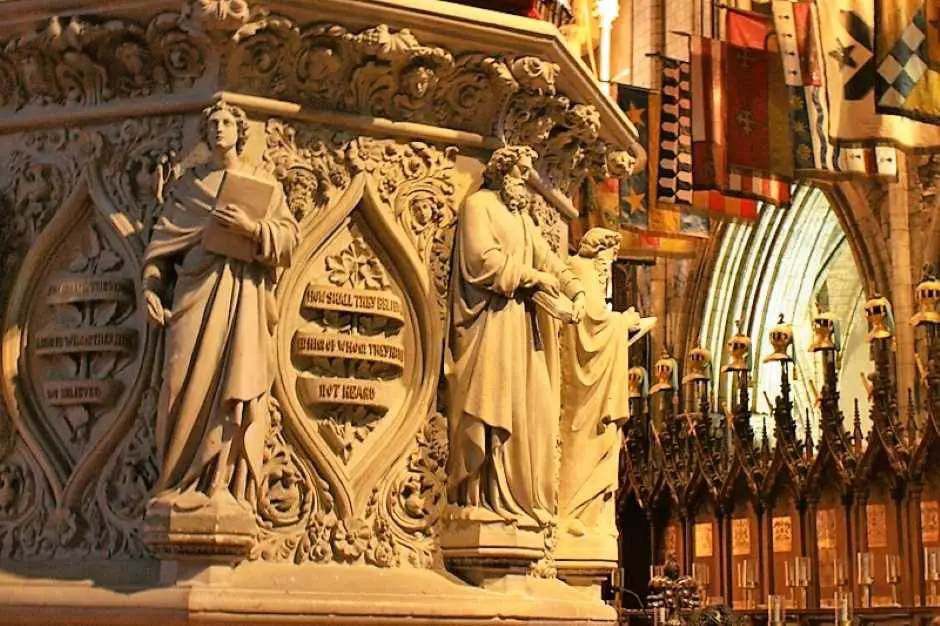
St. Patrick's Cathedral - one of the Dublin sights for Catholics
St Patrick's Close, phone (01) 475 4817 or (01) 453 9472, fax. (01) 454 6374, current opening hours you can find here, entry
It is said that John Comyn, who had been made Archbishop of Dublin by Henry II in 1181, did not want to live under the jurisdiction of the city lords and so moved away from Christ Church to marshy grounds outside the city walls, just 400m from his old official residence away.
The connection to St. Patrick
St. Patrick probably baptized the first Irish there around 450 AD at a spring that was rediscovered in 1901 in St. Patrick's Park. Henry de Loundres, his successor, built an Early English style church which was consecrated in 1254 and soon gained cathedral status.
St. Patrick's Anglican Cathedral has been enlarged several times (1270 for the first time, the tower was added in 1370). A fire in 1362, desecration of the church and neglect made the church more and more dilapidated until the Guinness family had the church thoroughly restored between 1864 and 1869.
The interior of St. Patrick's Cathedral
Inside the church, to the right of the entrance, are the tombs of Jonathan Swift and Ester Johnson, whom he immortalized as Stella. Jonathan Swift was Dean of St. Patrick's Cathedral from 1713 to 1745. He chose his epitaph himself. He is found to the left of the door above a bust of himself: "He rests where wild indignation can no longer tear his heart."
Worth seeing is the Boyle Monument, which the Earl of Cork had built in 1631 in honor of his second wife Catherine. It is by the sculptor Edward Tingham. The child depicted on it is probably the later famous physicist Richard Boyle.
Opposite the entrance is a monument to Turlough O'Carolan, the harpist and last bard of Ireland (1670-1738).
The door with the hole
On the west side of the church is an old door with a hole in it - a memento of a feud between Lord Kildare and Lord Ormonde in 1492. Ormonde took refuge in the church's chapter house. A truce was negotiated, but Ormonde doesn't seem to have trusted his former opponent, as a hole was punched in the door so the two could seal it with a handshake.
From 1783 to 1869 the choir served as a chapel for the Knights of the Order of St. Patrick. That is why their banners, swords and helmets can still be found today above the choir pews, which are decorated with their coats of arms.
In the cathedral park, under the arcades on the east side, are plaques commemorating Dublin writers. Three of them received the Nobel Prize for Literature.
Dublin sights north of the Liffey
The area north of the Liffey was not developed until the 18th century. A better residential area with wide avenues should be created here. In the meantime, however, modern car traffic is putting an end to these ideas of a quiet residential area. O'Connell Street, the main street north of the Liffey, suffers from constant gridlock.
Impressive buildings such as the General Post Office, the Four Courts, the Customs House, the Rotunda Hospital, the Gate Theater and the Abbey Theater date back to the area's heyday.
There are numerous shopping centers along O'Connell Street. Just steps away, Moore Street Market sells fresh fruit, vegetables and cut flowers.
It is best to start your tour at O'Connell Bridge.
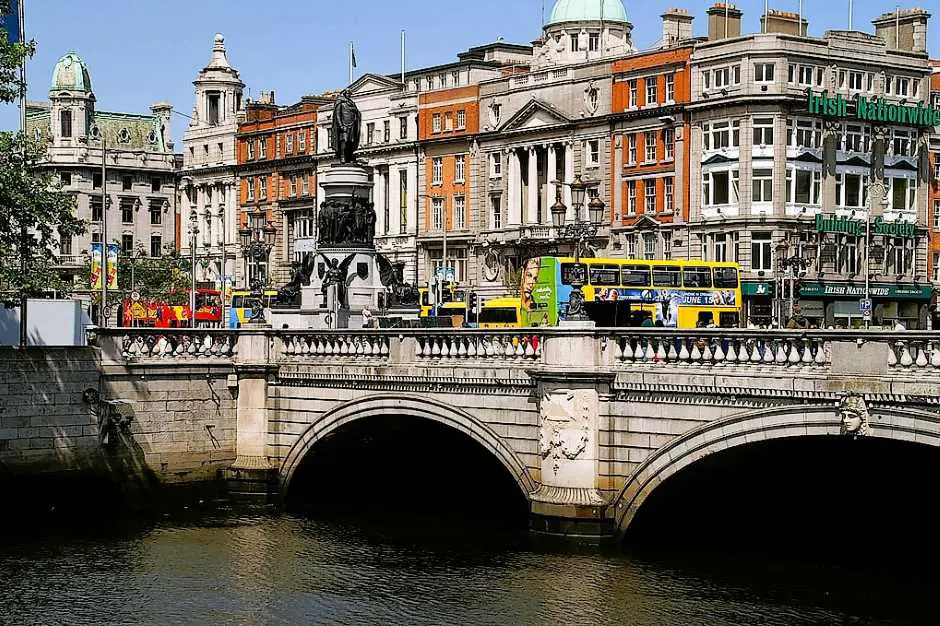
O'Connell Street – Dublin Attractions
The route from the north end of O'Connell Bridge to Parnell Square is worth seeing.
The street was planned by Luke Gardiner in the 18th century as a shady promenade and then converted into a narrow residential park. Renamed Sackville Street, the street became the most important street in 18th-century Dublin. It received its current name in 1922.
A few monuments line up from O'Connell Bridge to Parnell Square. From south to north you will find: Daniel O'Connell created by John Foley; William Smith O'Brien (1803-64), leader of the Young Ireland Movement, sentenced to death for treason in 1848; Sir John Gray, who established Dublin's water supply; James Larkin (1876 – 1947), union founder; Father Theobald Mathew, the advocate of anti-alcohol laws in the 19th century.
The fountain of the river goddess Anna Livia, who symbolizes the Liffey, commemorates Dublin's millennium celebrations in 1988. Scoffers soon nicknamed it "the floozie in the jacuzzi". It stands on the site of Nelson's Column, which was damaged by a bomb in 1966 and then demolished.
The 1846 Parnell Column in Parnell Square commemorates Charles Stewart Parnell (1891 – 1911). He was one of the pre-eminent Irish politicians of the second half of the 19th century and advocated self-government under British rule. Only when it turned out that Ireland could not achieve self-determination by peaceful means was he dismissed.
General Post Office (GPO) - one of Dublin's landmarks from the time of the Insurrection
On O'Connell Street
The post office building was built between 1815 and 1817 according to plans by Francis Johnston. It gained historic importance on Easter Monday 1916 when members of the Irish Volunteers and Irish Citizen Army occupied the post office and proclaimed the Irish Republic from its steps. The insurgents, led by Patrick Pearse and James Connolly, were forced to retreat after a week under British fire.
The rebellion initially received little support from the Irish people. Only when 14 of the leaders were executed in Kilmainham prison in Dublin in the following weeks did this change and the development towards the Irish Republic continued.
In the Great Hall of the Post Office, the Death of the Cuchulainn memorial commemorates those killed in the riot.
Parnell Square
The square was once the center of an affluent part of the city, but has since run down. Nevertheless, you can still find important sights here. The Gate Theater was founded in 1928. Originally it was a dining room in the Rotunda Hospital. Today, contemporary international plays are performed there. Many famous actors earned their early laurels here, including James Mason and Orson Welles.
The Rotunda Hospital stands in the middle of the square. It was Europe's first maternity hospital and was founded in 1745 by Dr. Bartholomew Mosse founded. On the east side of the building is the Rotunda, from which it owes its name. Events and concerts were organized here to raise money for the hospital. Franz Liszt gave a concert in 1843.
The Garden of Remembrance is dedicated to the men and women who gave their lives for Irish freedom. This is where some of the leaders were held before being taken to Kilmainham Prison. President Eamon de Valera opened the park in 1966 to commemorate the 50th anniversary of the Easter Rising.
Dublin's Writers' Museum opened in 1991 in two 18th-century buildings. House #18 is dedicated to writers such as Jonathan Swift, Oscar Wilde, WBYeats, Bernard Shaw and James Joyce. House No. 19 serves as a meeting place for contemporary poets and for poetry readings.
Abbey Theater
Lower Abbey St, Tel (01) 878 7222.
The theater was founded in 1898. WBYeats and Lady Gregory were directors of the theater and in 1904 the first play was staged. The Abbey Theater premiered plays by Irish writers, including works by Yeats, JM Synge and Sean O'Casey. It is known for its productions of works from the early 20th century.
But in recent years, young artists have also been promoted. The Abbey Theater also puts on plays in Gaelic.
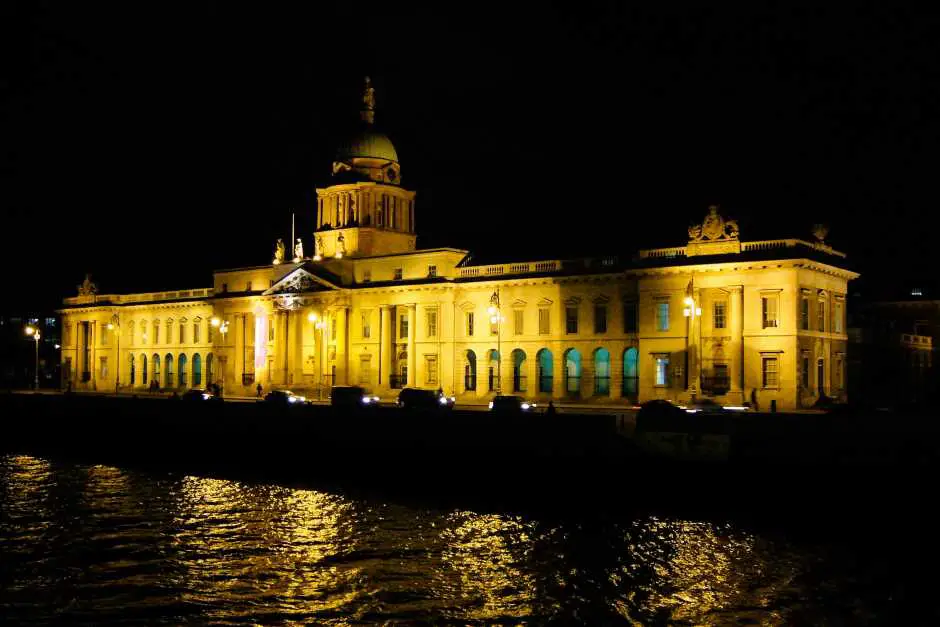
Custom house
Custom House Quay, closed to the public
Turning right on the north side of O'Connell Bridge brings you to this impressive building designed by English architect James Gandon. In 1800, just nine years after its completion, Customs was moved to London. In 1921, Sinn Fein supporters set fire to the building, which they saw as a symbol of British imperialism. By 1926, the Custom House was rebuilt according to old plans.
The Doric portico in the center is surmounted by the dome. The statue on top symbolizes trade. Most of the sculptures are by Edward Smyth, a Dublin sculptor.
Four Courts – Dublin attractions north of the Liffey
Inns Quay, Tel (01) 872 5555, Mon - Fri 10.00am - 13.00pm, 14.00pm - 16.30pm (when meetings are held).
Following the north bank of the Liffey to the left of O'Connell Bridge is the Four Courts, also designed by James Gandon. The seat of Ireland's Supreme Court is here. The building was heavily shelled during the Irish Civil War in 1922. The restoration work, in which only slight changes were made to the original design, lasted until 1931.
The Corinthian portico in the center of the building front is surmounted by a round building with a dome. The two side wings house the four original courtrooms: the Exchequer (financial court), Common Pleas (private prosecution), King's Bench (criminal) and Chancery (chancellery).
You can also find travel tips for Dublin in these travel guides*.
If you purchase via a link marked *, we receive a commission, which we use to run this blog.
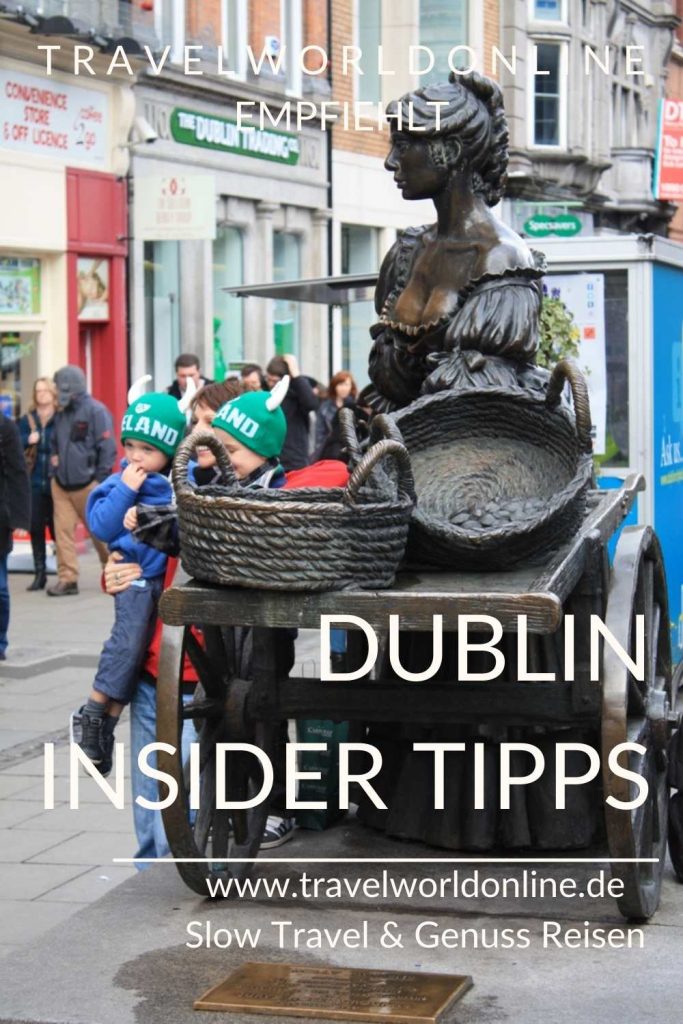
Do you also know:
- The doors of Dublin
- St Patrick's Day in Dublin
- What do you do when it rains in Dublin?
- Ireland tips from travel bloggers
- Toronto and the cultures of the world
- Vancouver Island activities for connoisseurs
- Experience the Sea of Lights: A Guide to Times Square NY
Source Ireland Dublin sights: own research on site. Our opinions definitely remain our own.
Text: © Copyright Monika Fuchs and TravelWorldOnline
Photos: © Copyright by Monika Fuchs as well as TravelWorldOnline and Wikimedia Commons in the public domain
